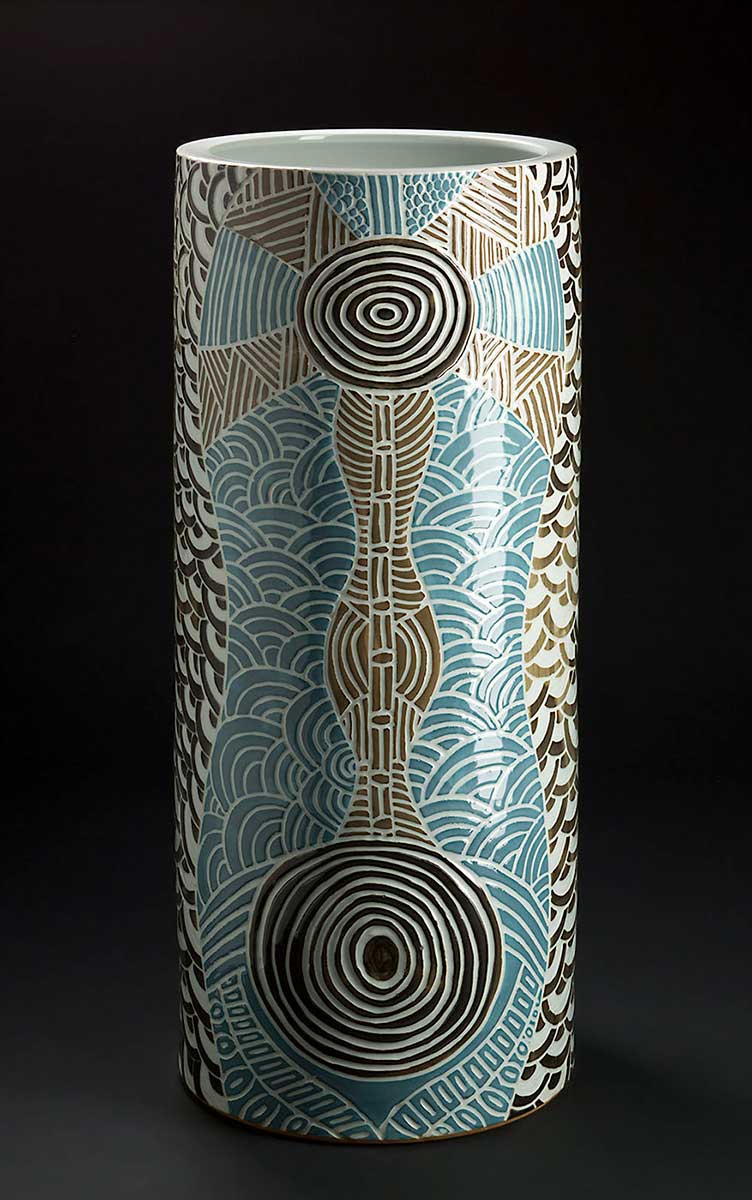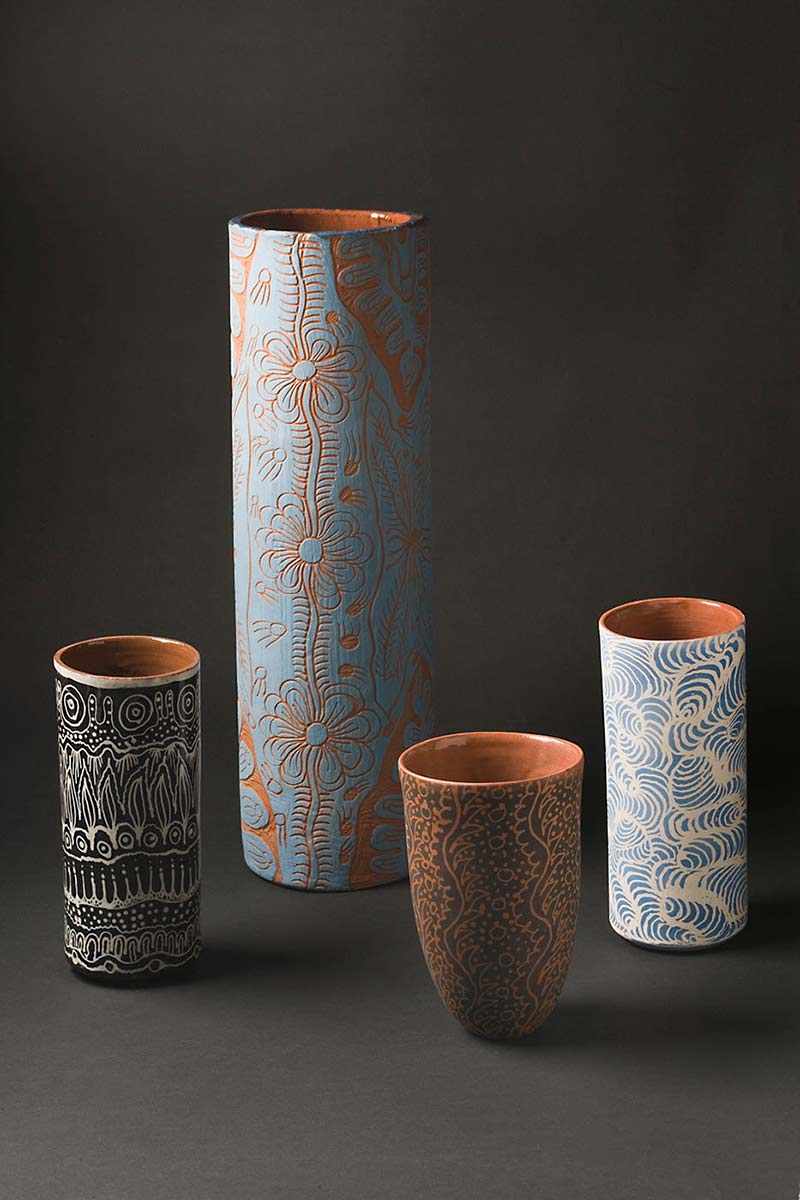Ernabella Arts is one of Australia's longest continuously running Aboriginal arts organisations. The National Museum of Australia holds a rich Ernabella collection, representative of its signature pieces and emerging trends.
Ernabella Arts is located in Pukatja, 440 kilometres southwest of Alice Springs, just below the Northern Territory border in South Australia. It is part of the Western Desert community, renowned for its prolific production of Aboriginal art.
Ernabella artists are renowned for their batik work and this collection includes several silk batiks, along with newer ceramic pieces.
Living document

National Museum curator Andy Greenslade said updating the Ernabella collection ensures it is a living document of the community's art and cultural practice.
This collection includes archival material, along with the batiks and ceramics.
It builds on earlier collections which came to the National Museum from sources including the Aboriginal Arts Board and the late Deaconess Winifred Hilliard, who lived and worked in the community for many years.
Dreaming in China
The Museum's collection includes a glazed stoneware pot created by Ernabella artist Derek Jungarrayi Thompson during an artists' residency at the Big Pot Factory in Jingdezhen, China in 2013.
Jingdezhen, known as Porcelain City, has a history of ceramics dating back almost 2000 years.
Thompson's Kungkarangkulpa Attila tells part of the epic Seven Sisters Dreaming story in which the sisters travelled to his father's country near Attila (Mount Conner) before ascending to the sky as the Pleiades constellation.
Two-way exchange
The Museum's relationship with the Ernabella community is two-way and extends well beyond material culture. Visitors from Ernabella have staged performances and forums at the Museum in Canberra, viewed other Ernabella material in the collection and seen their work on exhibition for the first time.
‘The Ernabella community and the National Museum share a special relationship and it is one that is dynamic and reciprocal,’ Andy Greenslade said. ‘The collection doesn’t just stand testament to those people and organisations that had the foresight to amass it, nor does it just give a history of a particular period of the Ernabella community art centre. It is part of a rich and continuing tradition.
‘The collection traces the development of Ernabella Arts from its beginnings as an organisation established to provide employment for women, working with locally produced wool, to its international renown for batiks and printmaking.’
The National Museum collection also documents less successful ventures, including copper beating and stone carving.
Today, Ernabella artists are represented in major collections across Australia and the world.

Local enterprise to international stage
About 500 people live in the Ernabella community today. The township, now more commonly referred to by its Aboriginal name of Pukatja, lies on Pitjantjatjara Yankunytjatjara lands.
Key points in the recent history of Ernabella include:
- In 1872 pioneer explorer Ernest Giles passed through the area and wrote: ‘This is a really delightful discovery. In all my wanderings ... in Australia I never saw a more fanciful region than this.’
- The Ernabella sheep station was established in 1933
- The Presbyterian Mission bought the station lease and founded the Ernabella Mission in 1937
- The Ernabella arts centre was established in 1948
- Art and craft using locally produced wool was dominant in the 1950s and 1960s
- Batik was successfully introduced after several Ernabella artists travelled to Indonesia in the 1970s
In our collection
